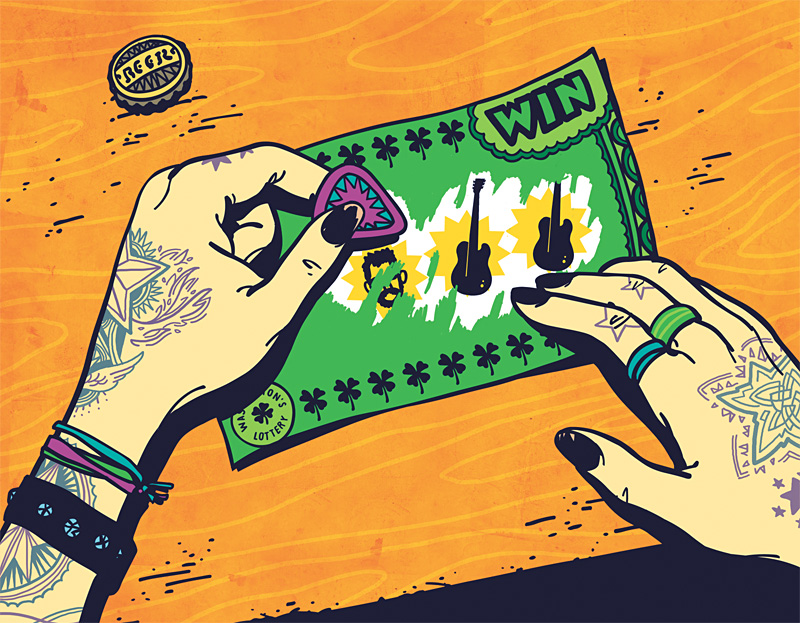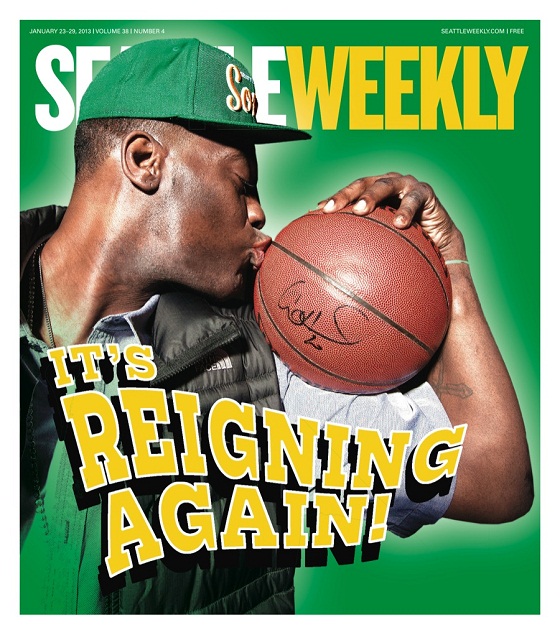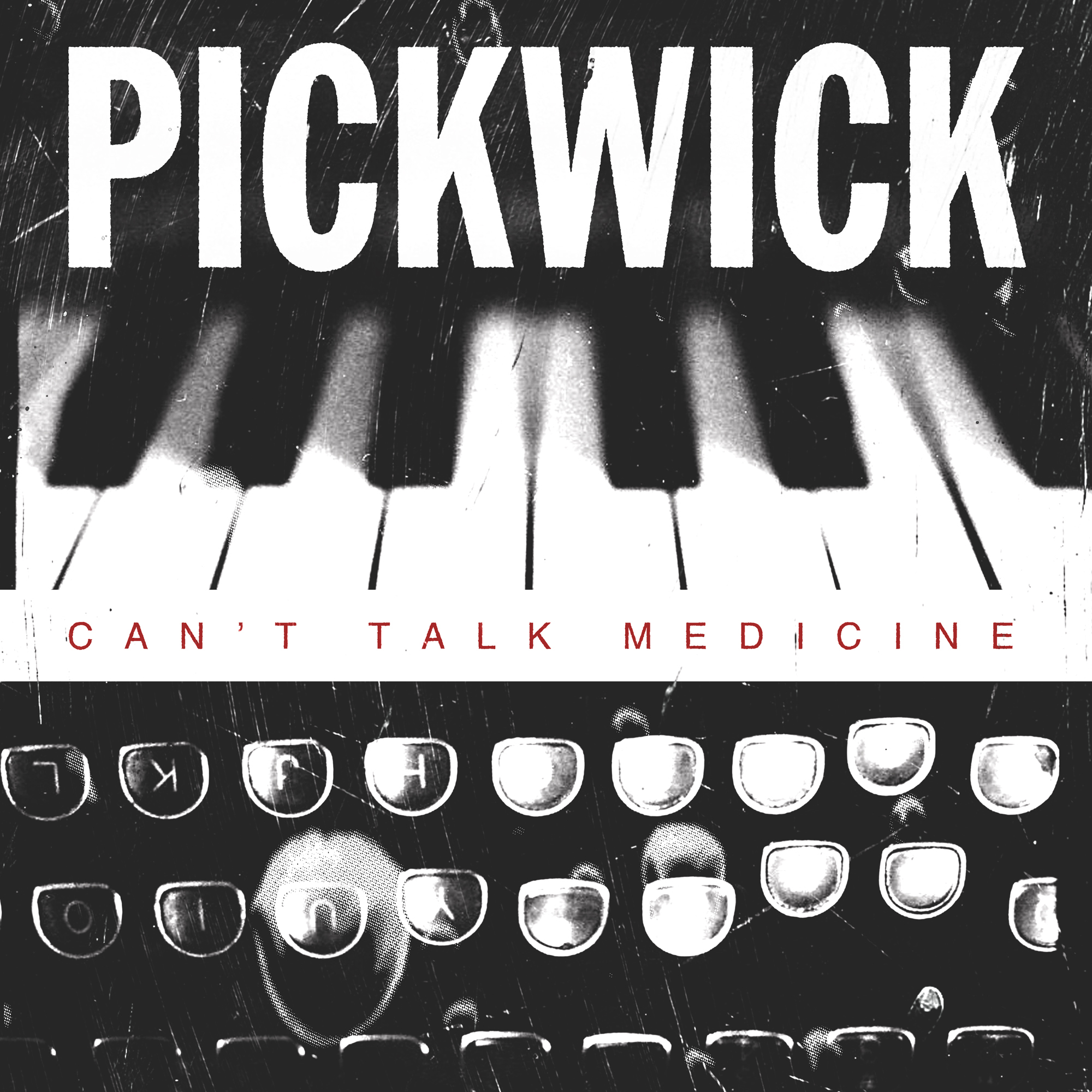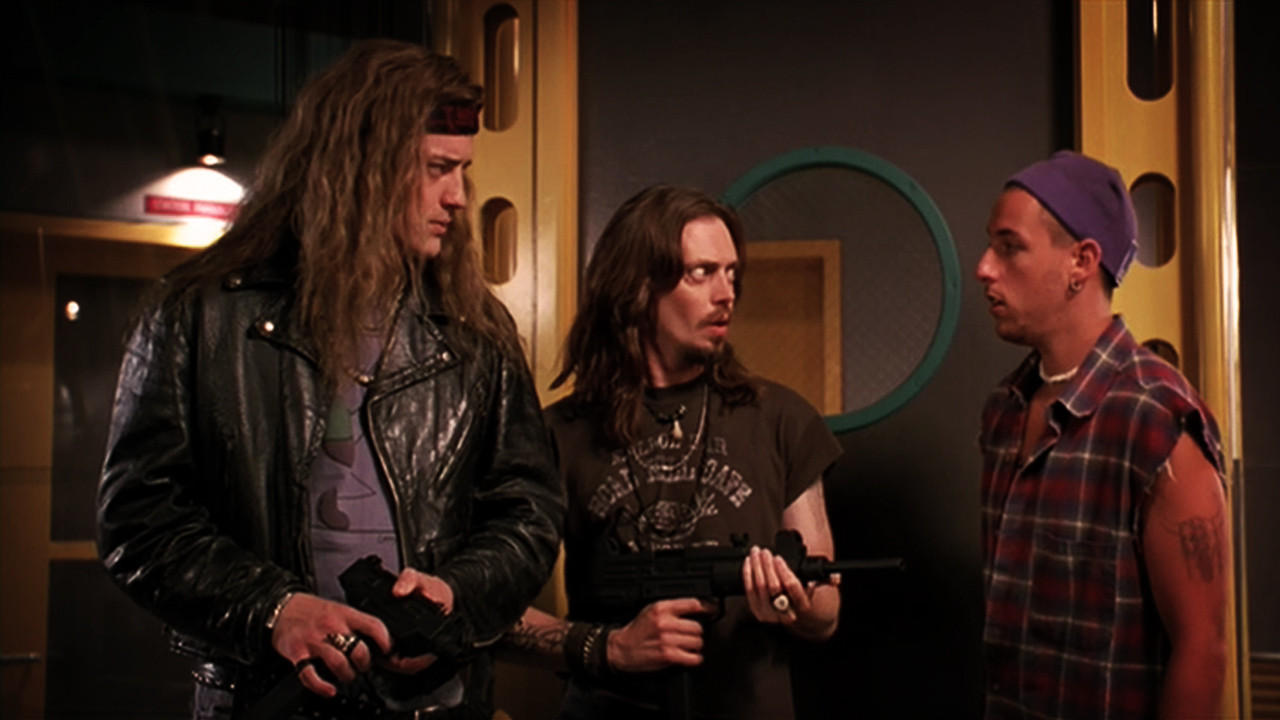In a TV commercial that began airing last summer, a grinning old man is seen tinkering with a contraption in his garage, accompanied by comforting guitar strums, raspy vocals, and the pitter-patter of a snare drum and tambourine. He loads the machine–it’s almost looking like a robot at this point–and his dog into his vintage Chevy and drives out to the beach, where we see he’s created a device that will throw an infinite number of Frisbees. The machine never gets tired. “I dream of being my dog’s best friend,” goes the voice-over. “What’s your dream?”
The ad is for the Washington State Lottery, and the music is “Seeds of Night” by Cave Singers, a Seattle indie-folk trio that recently signed a multi-album deal with Indiana’s Jagjaguwar Records [see page 53] after two albums with New York’s Matador Records. The band, according to guitarist Derek Fudesco, is not without its standards. They don’t mind licensing their music to bad TV shows, but they would draw the line at clients like McDonald’s or the Air Force, Fudesco says. But the lottery—a state agency that helps fund education while, in the view of some people, preying on the poor—was a no-brainer for them.
“I gotta say that the people that made that video [made] a really nice commercial,” Fudesco told Seattle Weekly in an interview earlier this year. “It was kind of amazing because the way they asked us, they actually sent us [the commercial] with the music [already] in. And we all watched it and were like, ‘Wow, that’s actually kind of good.'”
The spot was the first in a campaign that has tapped local, and national, indie bands and artists to help sell and rebrand Washington’s Scratch and Lotto games. In addition to Cave Singers, this spring Brooklyn’s infinitely hip Grizzly Bear lent the soundtrack to a trippy Lotto commercial featuring a young woman who buys a Lotto ticket and immediately loses herself in a dream sequence that takes her on a carousel, to Paris, and dancing through the convenience store’s coolers. The spot was directed by Patrick Daughters, who has made music videos for the likes of the Kings of Leon, Beck, and the Shins. And many of the WSL’s print ads for Scratch tickets were designed by Sasha Barr of The New Year, known locally as a talented concert-poster artist who moonlights at Sub Pop designing album art for bands like Fleet Foxes and Flight of the Conchords.
The campaign smacks of a coordinated attempt to make Lotto the next Pabst Blue Ribbon: an old-school, working-class product appropriated by the young until it becomes ubiquitous among a new urban segment of consumers. But Jacque Coe, WSL’s director of communications, says the goal of those commercials and print ads was to “get people to look at the lottery in a new way,” not specifically to pitch Lotto products to the skinny-jeaned set.
Britt Peterson, a partner at Seattle’s Cole & Weber United ad agency, which won the three-year, $12 million Lotto contract in 2008, says her agency’s very familiar with the Pabst phenomenon. In fact, Cole & Weber has worked with Pabst Brewing Co. to revive a couple of their brands, like Colt 45 and Rainier (they created the “Remember Rainier” campaign and videos), hoping to “really make that a more relevant brand among a younger and more urban audience as well.” But she says that when it came to the Lottery, that wasn’t the play they were making.
“It wasn’t really about a demographic play,” says Peterson. “Anyone wants the chance to dream. Anyone wants that moment to go, ‘Wow, what would I do if?’ It’s truly human, and not specific to one particular audience.”
Pete Anderson, director of integrated production at Cole & Weber, ascribes the campaign’s indie bent to the fact that the radio station of choice for many C&W employees is KEXP, and they’re well aware of the city’s rich musical scene. But the bottom line, he says, was that the music seemed perfect for the spots, and would help increase Lotto’s appeal even among people who’d never heard of Grizzly Bear or Cave Singers. C&W has used local music for other clients as well—Michael Vermillion recently recorded some music for a Tree Top apple juice campaign.
“Advertisers realize that [indie] bands, while perhaps not yet household names, are entirely capable of producing songs that resonate across demographic divides, and—equally as important—songs that are relevant to the context in which they are used,” says Sandy Wilson, who handles TV & film licensing for local label Light in the Attic Records. “At the end of the day, advertisers want a song that complements their brand image while simultaneously nailing the feeling of the spot. It is very likely that indie songwriters are realizing the great potential of writing songs that are both hip and commercially viable. Also, I think that advertisers realize they get more bang for their buck using indie artists, because people remember where they heard their new favorite song for the first time.”
Grizzly Bear was picked by C&W in 2009, soon after Daughters finished the massively popular video (nearly three million YouTube views) for the band’s song “Two Weeks.”
Daughters showed band members the spot and said “Do you guys want to score a track to this?”, according to Anderson, who adds: “A lot of times it’s who you know.” The ad made a big impression in the music blogosphere. Everyone from Entertainment Weekly to New York chimed in, sometimes to speculate about whether this previously unheard track was a to-be-released single or written specifically for the commercial. In retrospect, the lyrics were a dead giveaway: “Dreaming of something more/My thoughts began to soar/And these are days I’m ready to sail away/It could happen on a lucky day.”
“They wrote it for the spot,” Anderson says. “If you do a really good spot, then musicians will tend to be like, ‘Yeah, I want to be a part of that.’ Where others, sometimes it’s just a paycheck to ’em. You gotta have one or the other: a really cool spot, or some money.”
Hutch Harris and his Portland band the Thermals have made a career out of saying no to advertisers, most famously the makers of the Hummer, who offered the band $50,000 to use the 2003 song “It’s Trivia,” at a time when all three band members were still working day jobs. But, ever aware of the ways bands can make a living in an age of declining album sales and rampant online piracy, Harris says he passes no judgment on bands that take the paycheck they passed on.
“Really, the most money we make does come from licensing, and it’s the least amount of work,” says Harris, whose band has licensed primarily to TV shows. “It’s my favorite way for the band to make money,” he says. “Sometimes just one placement will be the same amount” as everything the band earns from its other efforts the rest of the year.
Ad placement has also launched some artists into the public consciousness—perhaps most famously Nick Drake, the folk artist who died in 1974. His music lived in obscurity until a 2000 Volkswagen commercial featured his song “Pink Moon.” Drake’s album of that name sold less than 5,000 copies in his lifetime, but to date has sold more than a million, according to Nielsen/Soundscan.
Not that there’s any guarantee of success. A portion of Jim Noir’s “Eanie Meany,” from his Barsuk album Tower of Love, was featured in an Adidas commercial during the 2006 World Cup (not exactly a small affair). It didn’t launch Noir to fame, and the record has sold only 7,000 copies in the States to date, according to Nielsen. And Cave Singers’ Invitation Songs—featuring the licensed “Seeds of Night”—has sold a modest 11,000 copies, compared to 6,000 of the band’s follow-up, Welcome Joy.
That first million could be just a car commercial—or Lotto ticket—away.
With reporting by Brian J. Barr.








